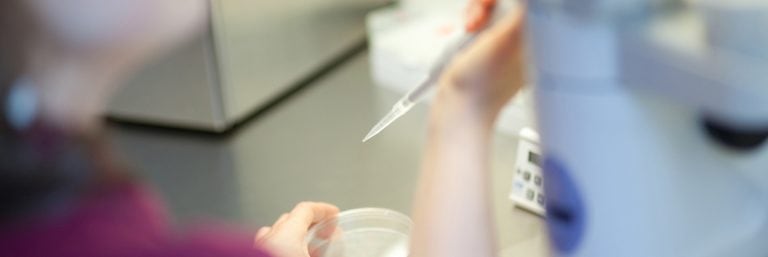Mini-IVF™
Many women who want to undergo IVF treatment are reluctant to do so because of the need for daily injections and the high cost of medication.
Other points of concern are: the risk of multiple births, the resulting prematurity and the so-called hyperstimulation syndrome (OHSS).
Mini-IVF™ is a completely new approach in this field, first developed by Prof. Kato in Japan and further refined by other pioneers of IVF, such as Dr. John Zhang of New Hope Fertility Center – New York.
Mini-IVF™ avoids 99% of the occurrence of hyperstimulation syndrome and uses no- to very few (3-4) injections. Where conventional IVF treatment involves medication costs of 1200-2000,- Euro, here a maximum of 380-400,- Euro can be expected. In addition, the stimulation is very easy to perform. In contrast to conventional IVF, in which usually 15-20 oocytes are retrieved, but of which (depending on age) only 4-5 oocytes are of really high quality, in Mini-IVF™ only 4-8 oocytes are expected to grow. The remarkable thing is that here also 3-5 eggs of high quality mature. In essence, despite the reduction in the number of eggs, there is no reduction in the proportion of high quality cells.
The so-called “artificial menopausal injection” or “down regulation” is also not necessary here. Premature ovulation rarely occurs with Mini-IVF™.
The side effects in the woman, such as mild headaches and/or fatigue usually only last a few days.
It is now known that the extremely high stimulation dose in conventional IVF seems to lead to a deterioration of the implantation rate after embryo transfer. Now, one might think that this problem would therefore be solved by the restrained stimulation. But the tablets used in Mini-IVF™ unfortunately, in some women, lead to an inferior build-up of the endometrium. This means that on the one hand, with less medication, you get the same number of good eggs, but at the same time -possibly- the pregnancy rate is reduced due to an inferior mucosa. The solution to this problem is the cryopreservation of the oocytes or the fertilized oocytes. Since this cryopreservation is done by vitrification, one can assume a “survival rate” of the cells of 95-98%.
Therefore, it is recommended to cultivate the retrieved oocytes, freeze the embryos, and transfer them only in the next cycle (cryo transfer).
In addition, we recommend the so-called “SET” (single embryo transfer) of a blastocyst, resulting in pregnancy rates that can be expected in one cycle of conventional IVF- and transfer of 2 embryos – without the 20% risk of a twin pregnancy.
Which women are suitable for performing Mini IVF™ / ICSI ?
- Women who do not want conventional IVF with the associated high-dose stimulation therapy.
- Women who would like to take advantage of multiple, simultaneously retrieved eggs, because of the storage of eggs or (pre-) fertilized eggs (so also for the so-called “social freezing“)
- Women who are about to undergo cancer treatment and would like to freeze eggs (WITHOUT a partner) or (pre-) fertilized eggs (WITH a partner) beforehand.
- Women who have had bad experiences with hormonal stimulation
- Women at high risk of overstimulation syndrome (OHSS)
- The so-called “low-responders”, i.e. women who respond poorly to hormonal stimulation, who have a low ovarian reserve (premature menopause, women around their mid-40s)
- Older women, who often produce only 1-3 eggs despite hormonal stimulation.
This procedure is not recommended as initial therapy. Conventional IVF stimulation should be performed first! It does not serve as a method of cost saving either, since costs of cryopreservation and the following cryocycle, do not cost less in total.
